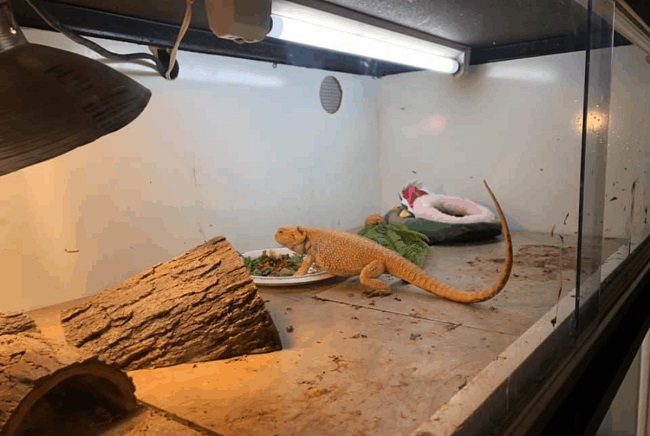Bearded dragons, or “beardies,” are among the most popular pet reptiles globally, owing to their docile nature and unique features. Proper care for these exotic pets requires attention to several factors, but one of the most crucial elements is temperature.
This article focuses on understanding the ‘Temp For Bearded Dragons’ and how to ensure their comfort and health.

Why is Temperature Important for Bearded Dragons?
Bearded dragons are ectothermic creatures, meaning they rely on their environment to regulate their body temperature.
An incorrect temperature can affect their metabolic processes, digestion, and overall health. Thus, maintaining the right temperature for bearded dragons is crucial.
Ideal Temperature for Bearded Dragons
The optimal temperature range for bearded dragons varies based on their age and the time of day.
Baby Bearded Dragons
The basking spot for a baby bearded dragon should range between 105-110°F (40-43°C), while the cooler end should be around 85°F (29°C).
Adult Bearded Dragons
For adults, the basking area should be between 95-105°F (35-40°C), and the cooler side should be kept at around 80-85°F (26-29°C).
Nighttime Temperature
At night, temperatures can drop to mimic their natural environment, but it should not go below 65-70°F (18-21°C).
Creating a Temperature Gradient
A temperature gradient (a range of temperatures) within the enclosure allows your bearded dragon to regulate its body temperature by moving to different areas.
The enclosure should have a warm end (basking area), a cooler end, and an intermediate zone. An under-tank heater and basking lamp can help maintain this gradient.
Monitoring and Maintaining Temperature
Maintaining the correct Temp For Bearded Dragons requires vigilant monitoring. Digital thermometers or temperature guns are reliable tools for measuring temperatures at different points in the enclosure.
It’s also advisable to invest in a thermostat to regulate the heat source and maintain consistent temperatures.
What If The Temperature Is Not Correct?
Improper temperatures can lead to health issues in bearded dragons. Too cold, and they may become lethargic, have a decreased appetite, or go into brumation (a hibernation-like state). Too hot, and they risk overheating, leading to potential heat stroke.
Understanding Seasonal Changes: Brumation and Temperature
Bearded dragons, much like their wild counterparts, are sensitive to seasonal changes, and their behaviors and needs adjust accordingly. One significant process to understand is brumation.
What is Brumation?
Brumation is a hibernation-like state that bearded dragons go into during colder months. It’s a natural process where bearded dragons slow down their metabolic activities, eat less, and sleep more. Some might not even wake up for weeks or months at a stretch.
Temperature Regulation During Brumation
Even though bearded dragons in brumation are less active and eat less, it’s still important to maintain proper temperatures in their enclosures.
However, the temperature can be slightly cooler than normal during this period. A basking spot of around 85°F (29°C) and a cooler end of about 70°F (21°C) can be suitable.
Brumation and Bearded Dragon Health
Regular monitoring during brumation is crucial to ensure the health of your bearded dragon. Although they eat less, they still need hydration. Offering water every few days is advisable.
Also, it’s important to have a veterinary check-up before and after brumation to ensure there are no underlying health issues. Understanding how temperature needs change with brumation can help you provide the best care for your bearded dragon during this unique period.
Keep in mind that not all bearded dragons will brumate, especially those kept in artificial environments with constant temperatures year-round. However, understanding the process can make you a more prepared and knowledgeable bearded dragon owner.
Conclusion
The ‘Temp For Bearded Dragons’ is a critical aspect of their care, impacting everything from their activity levels to their digestive health.
Regular monitoring and adjustment of enclosure temperatures can ensure that your bearded dragon thrives in its home. With the right care, these charming creatures can bring much joy to a household for many years.
























